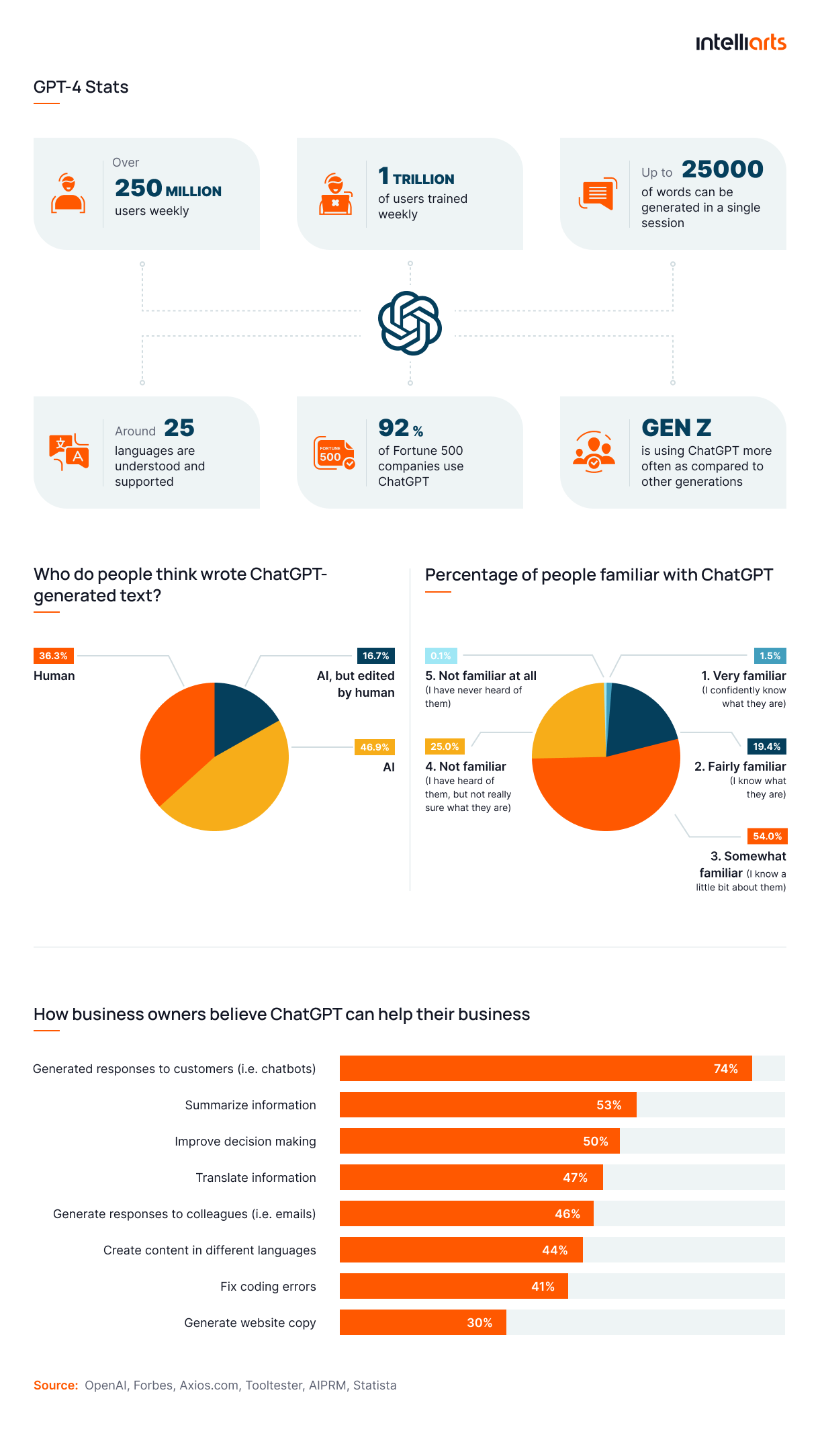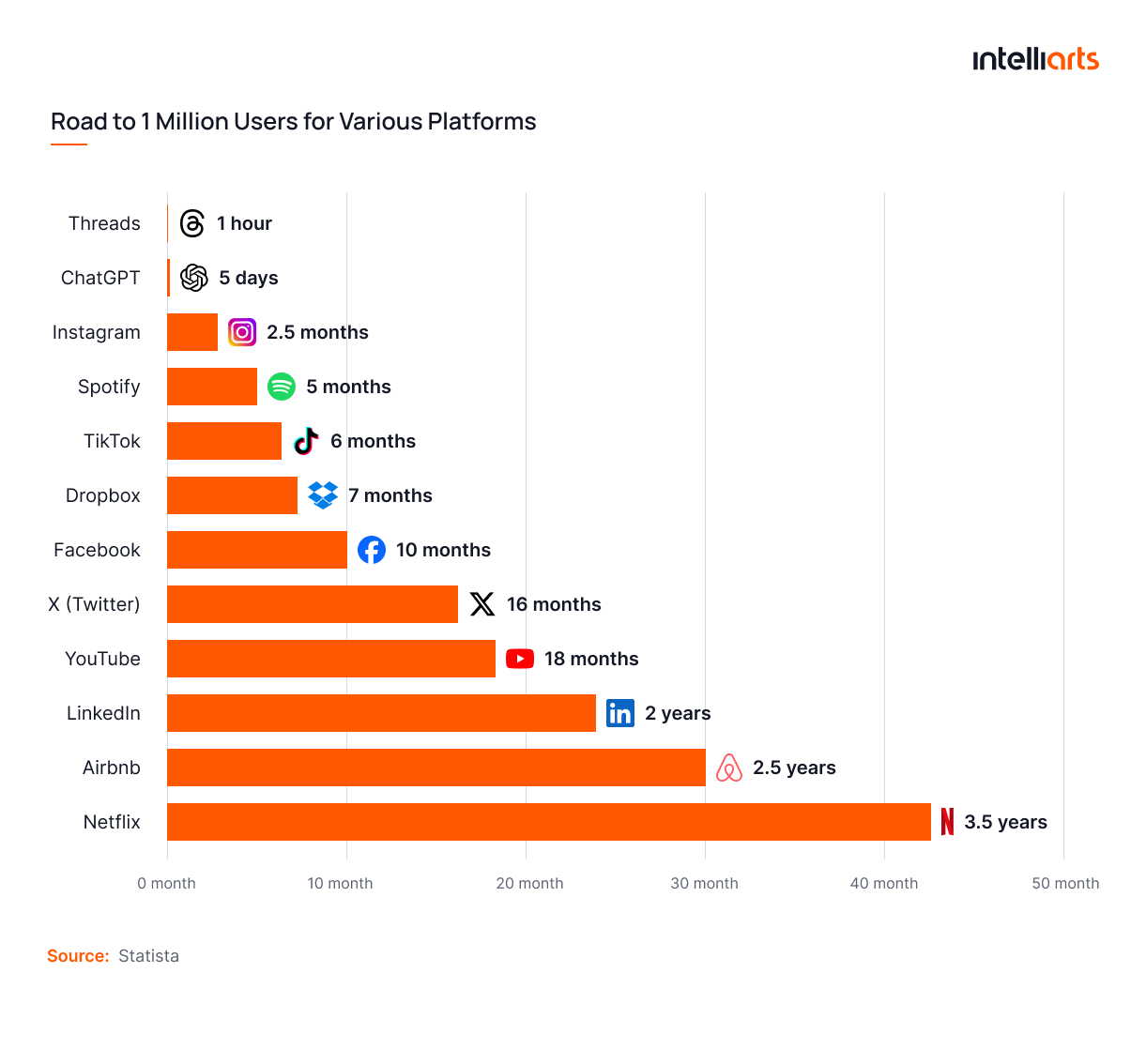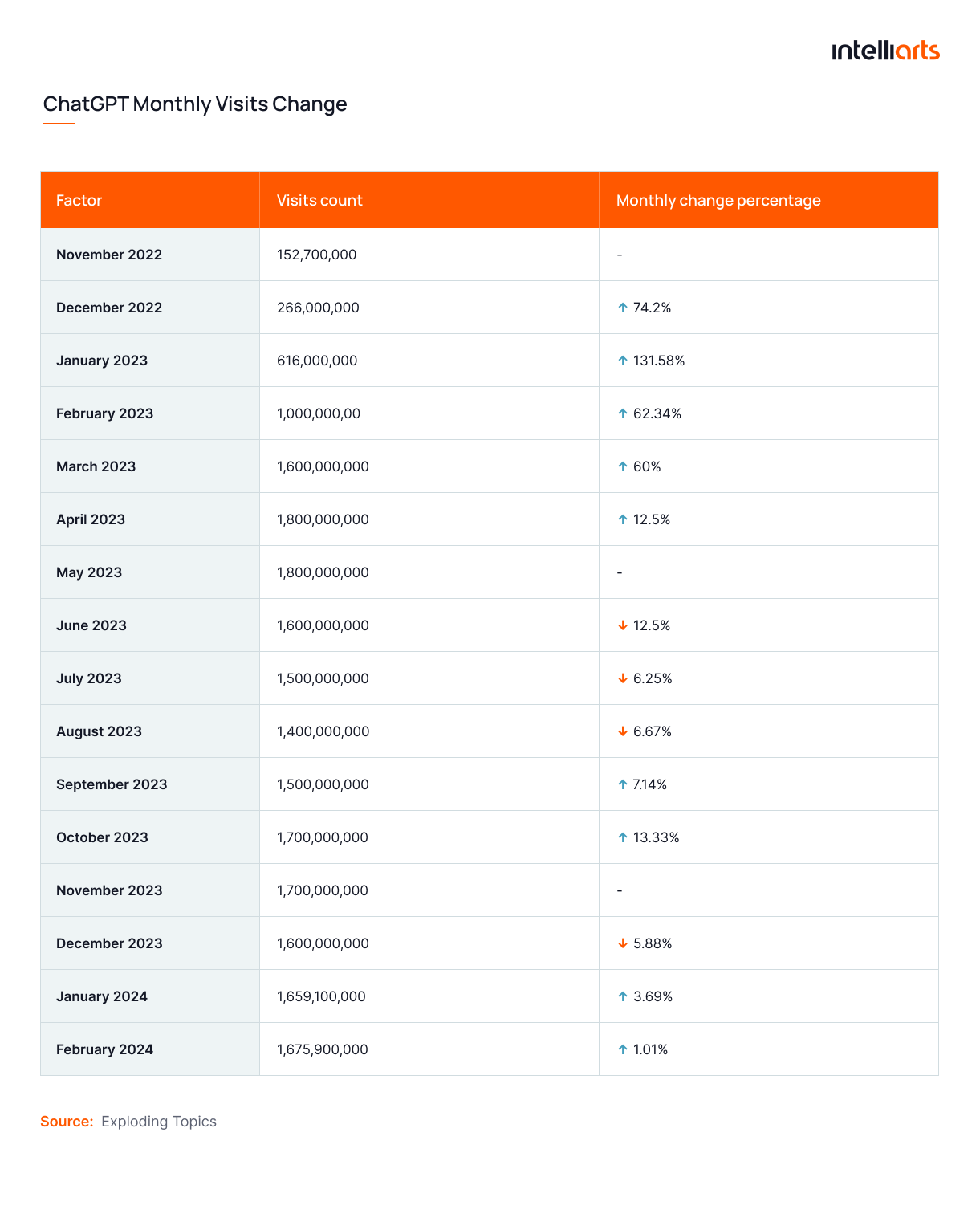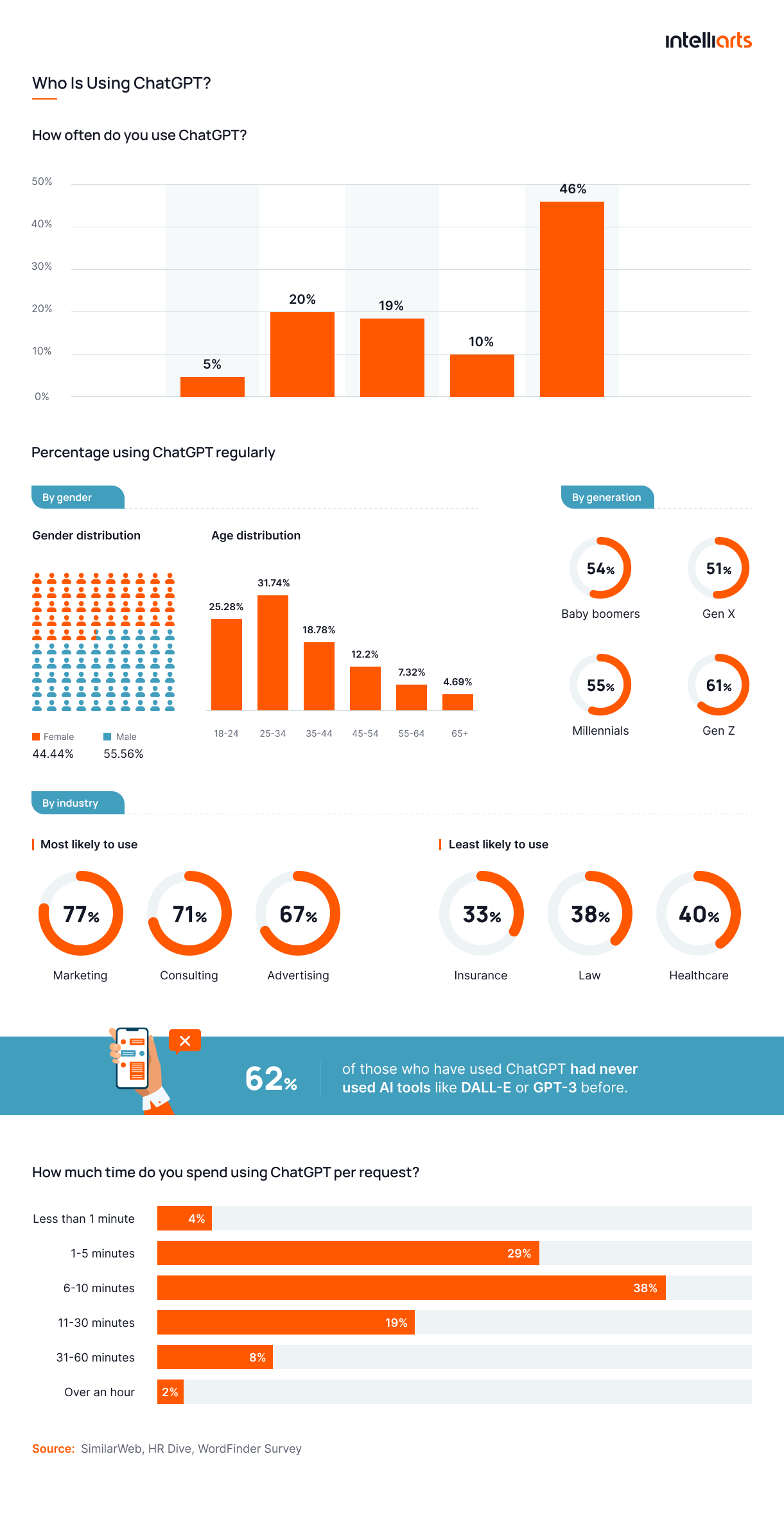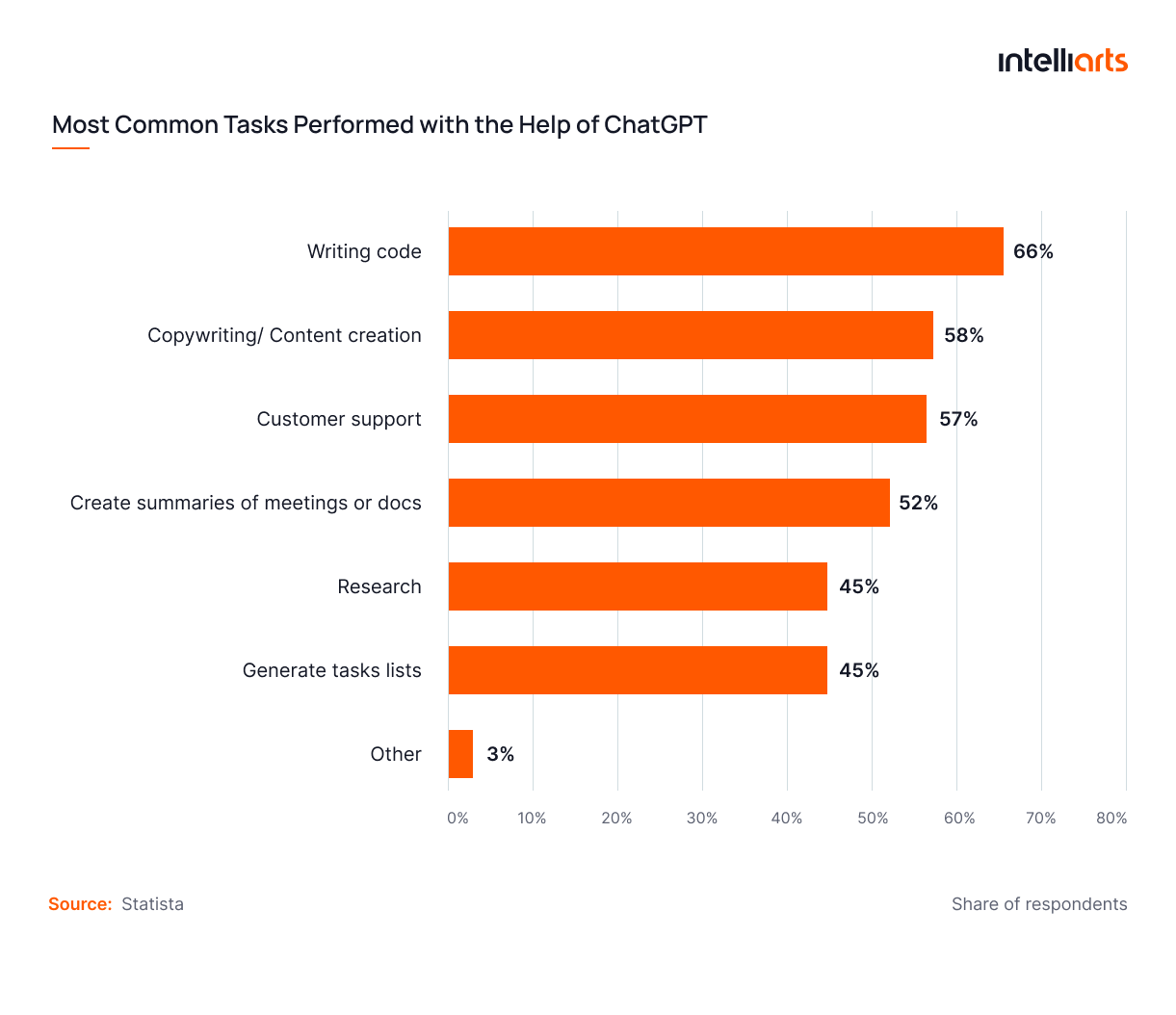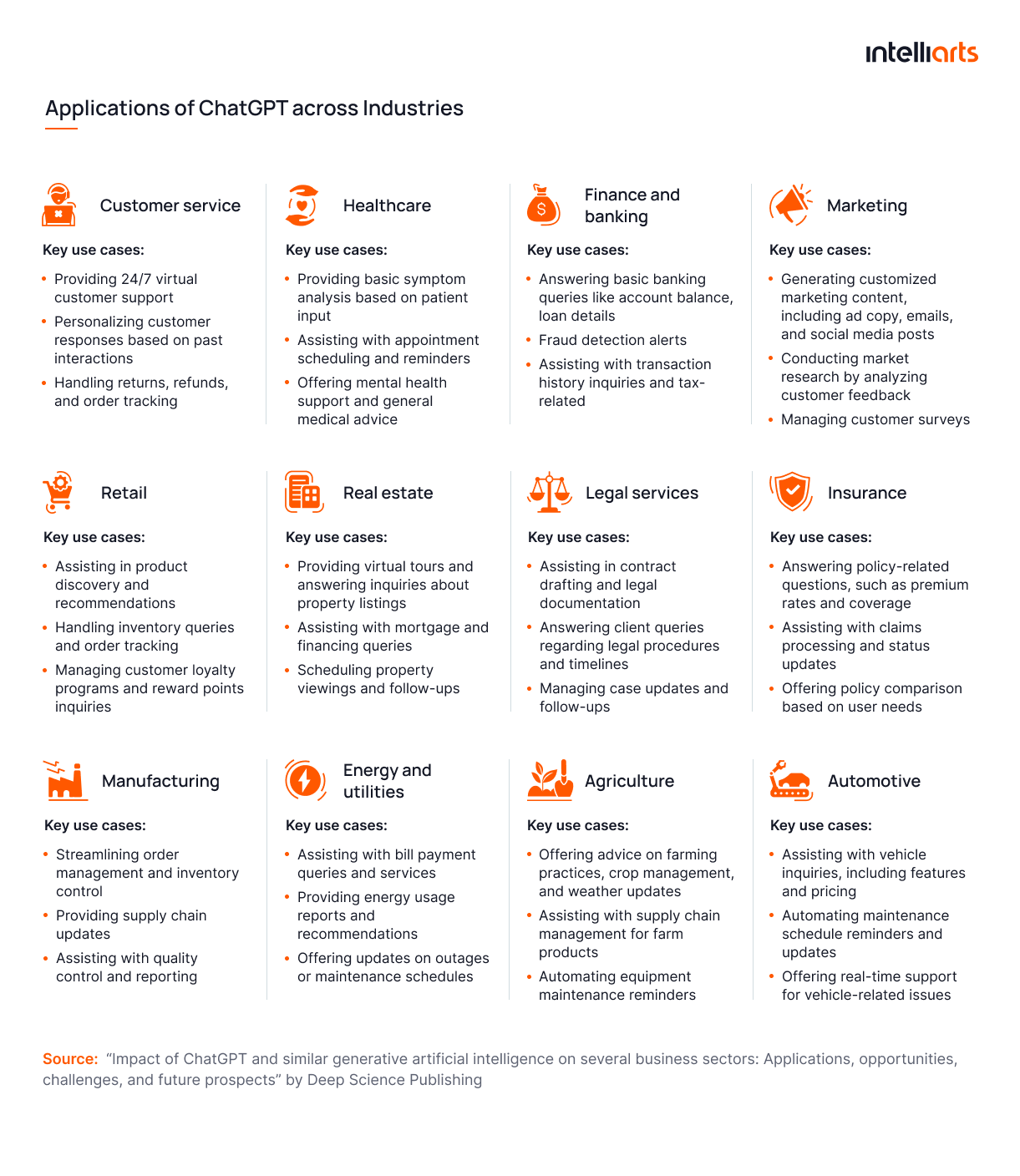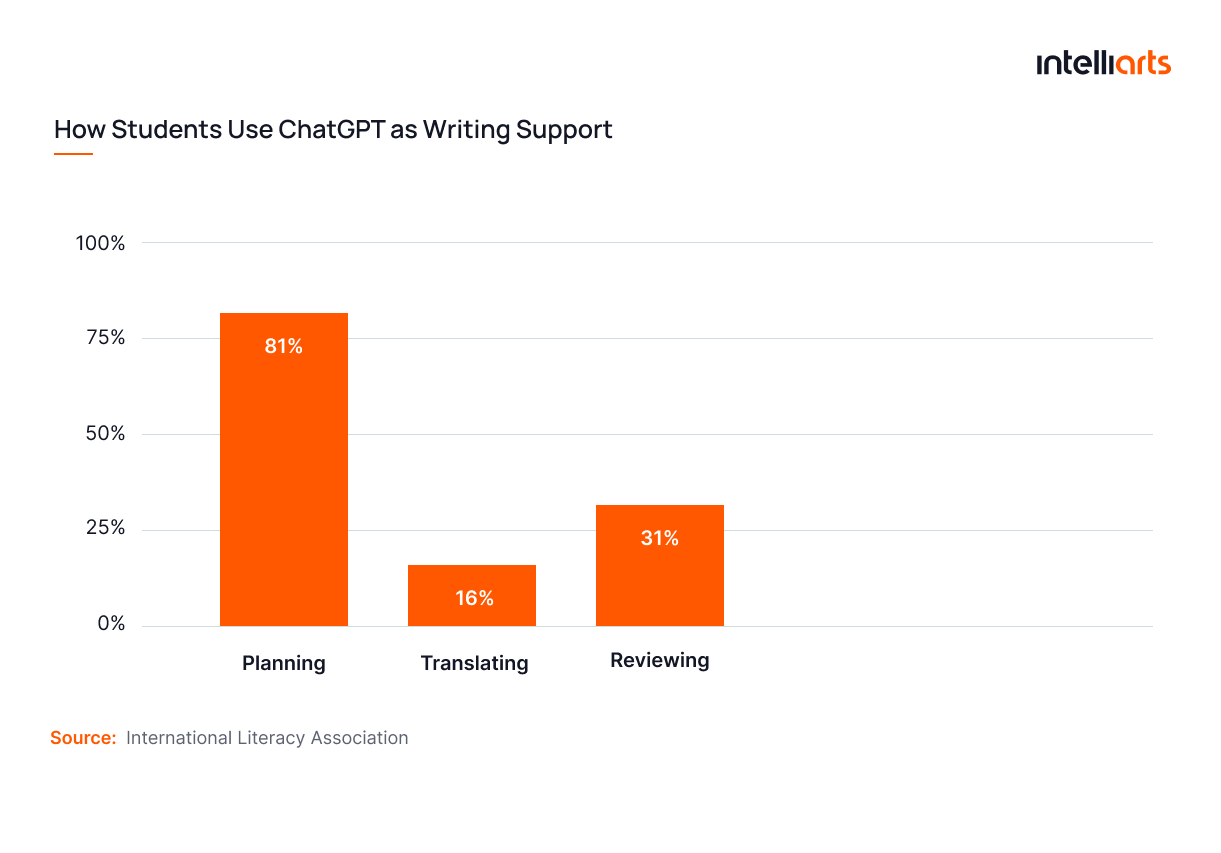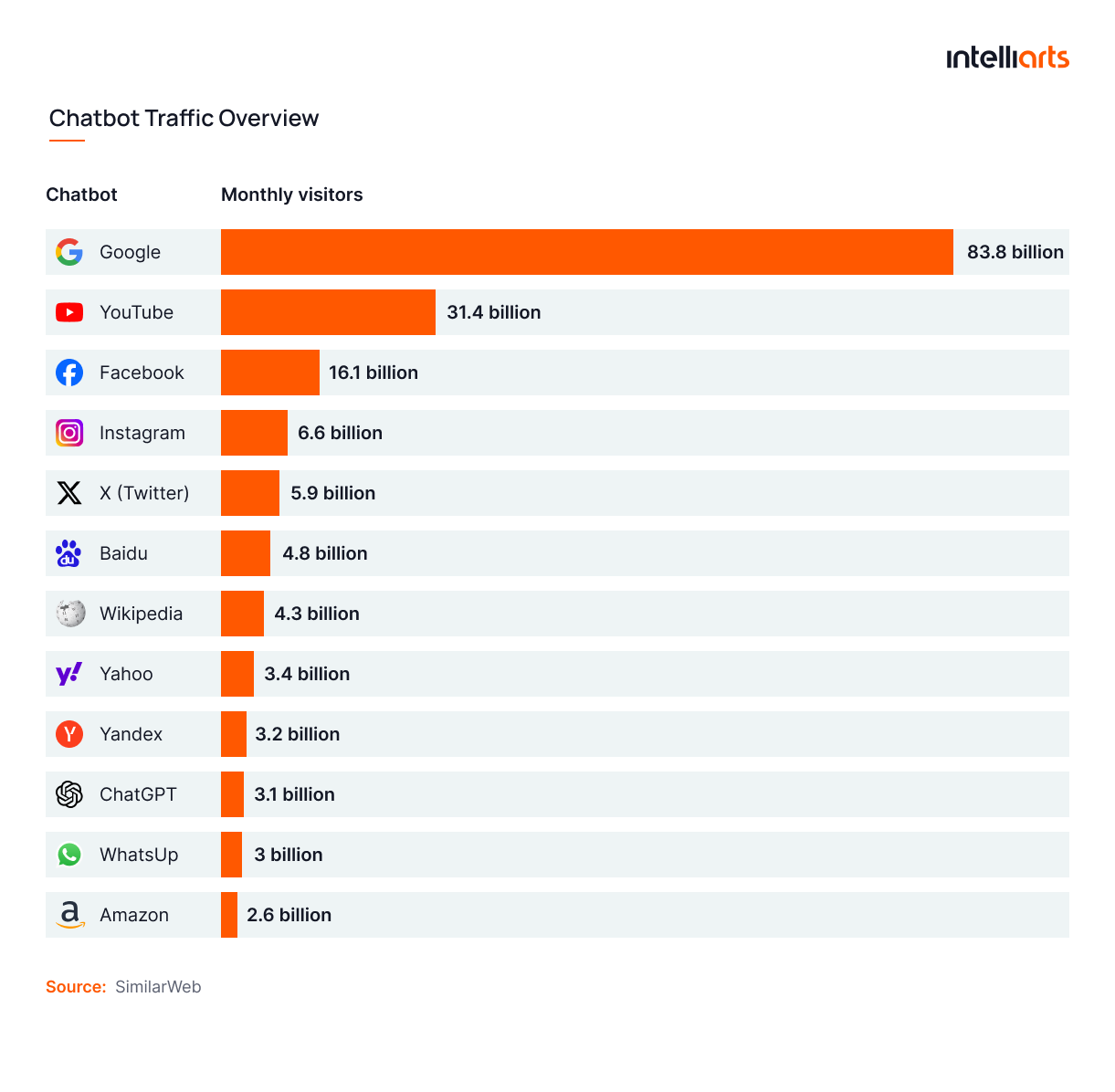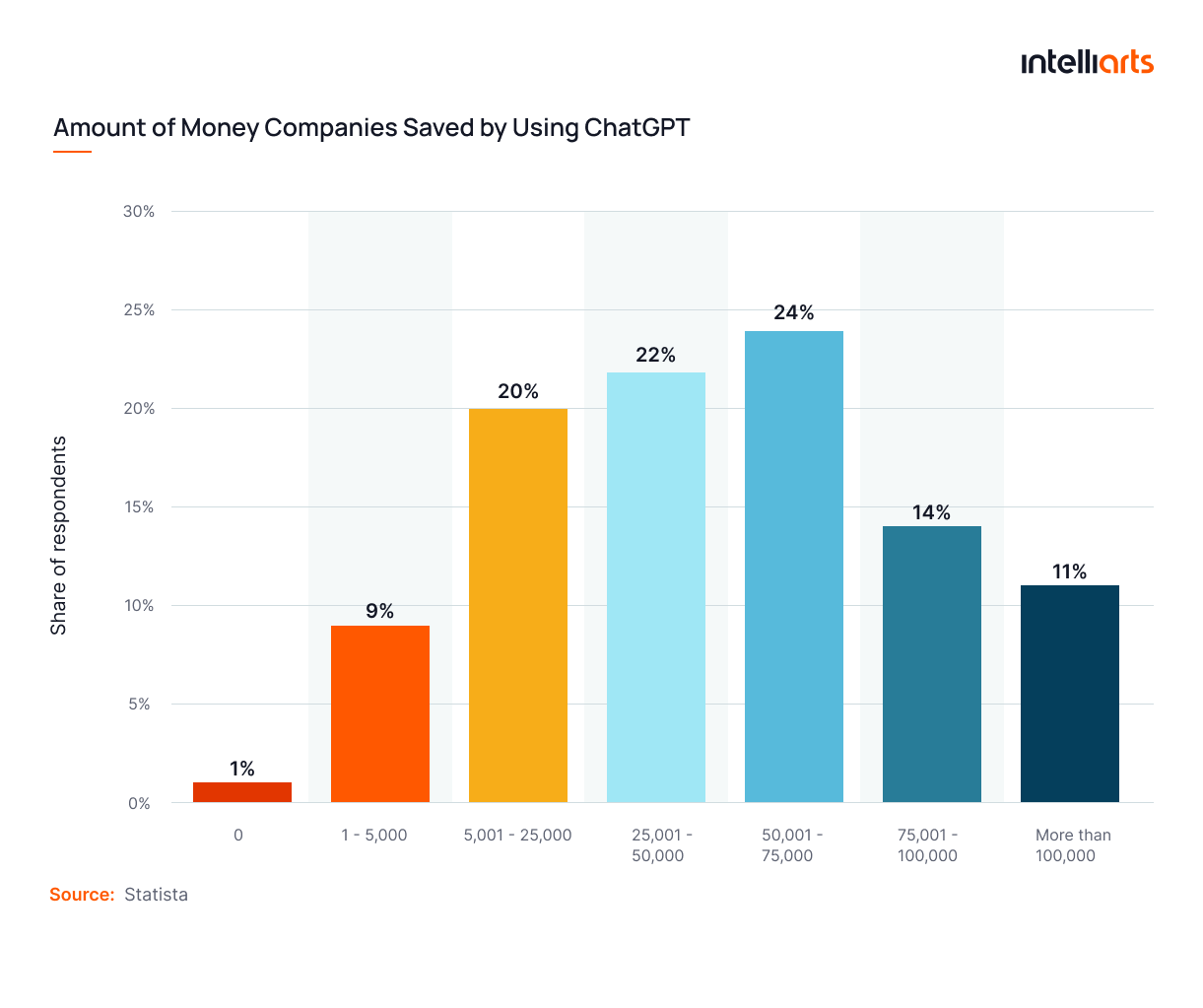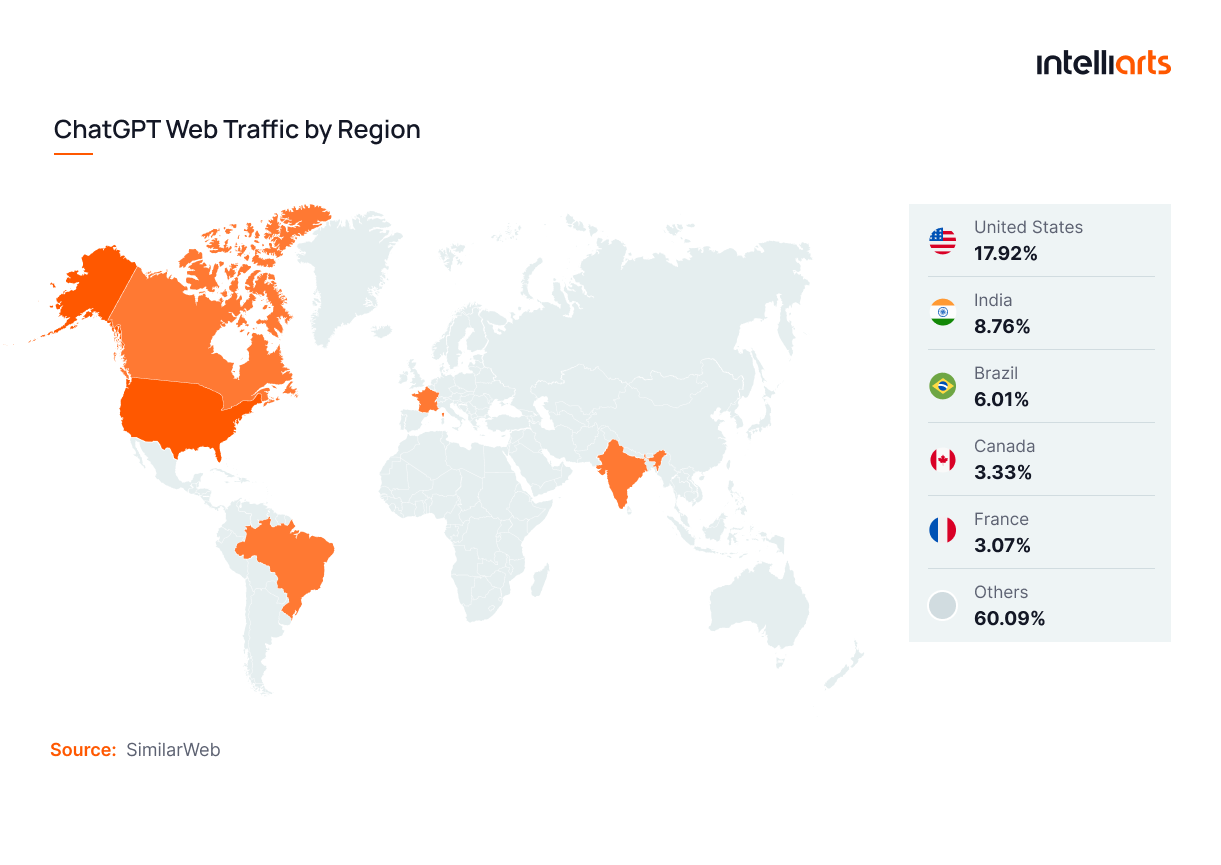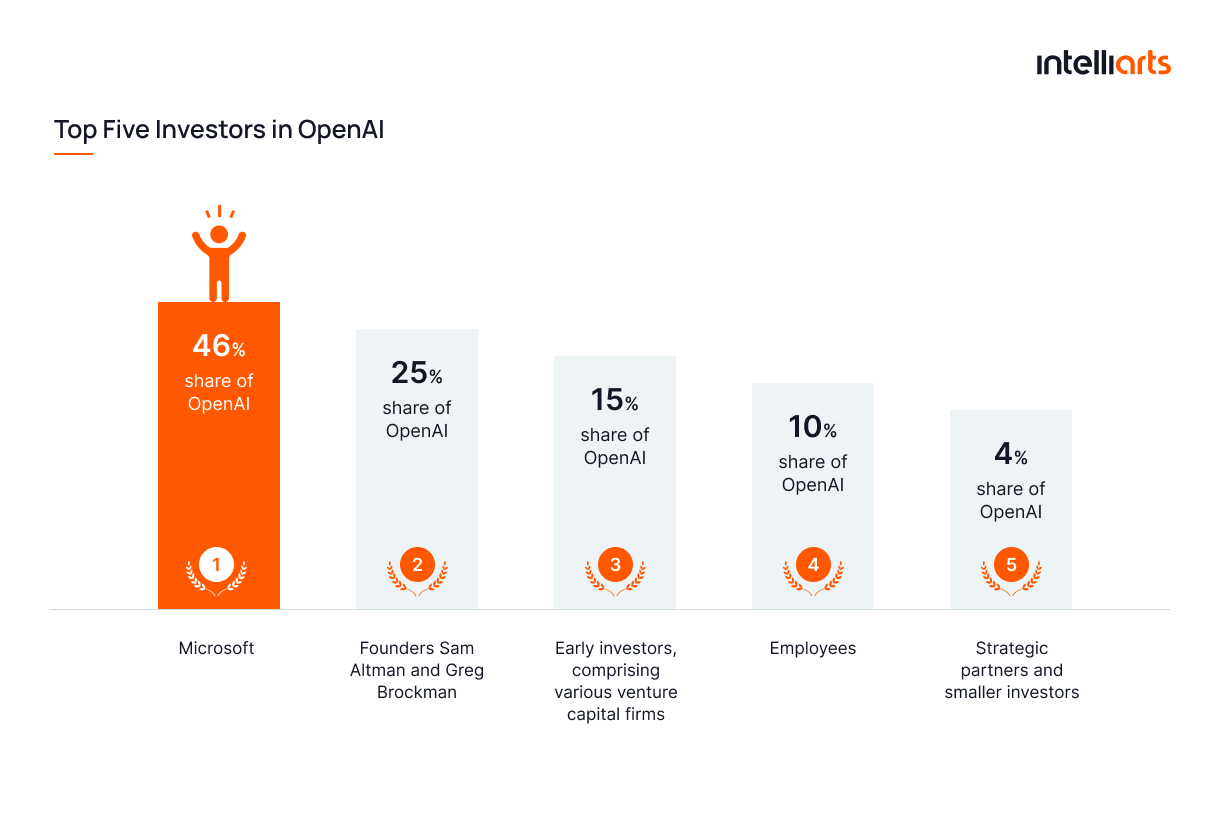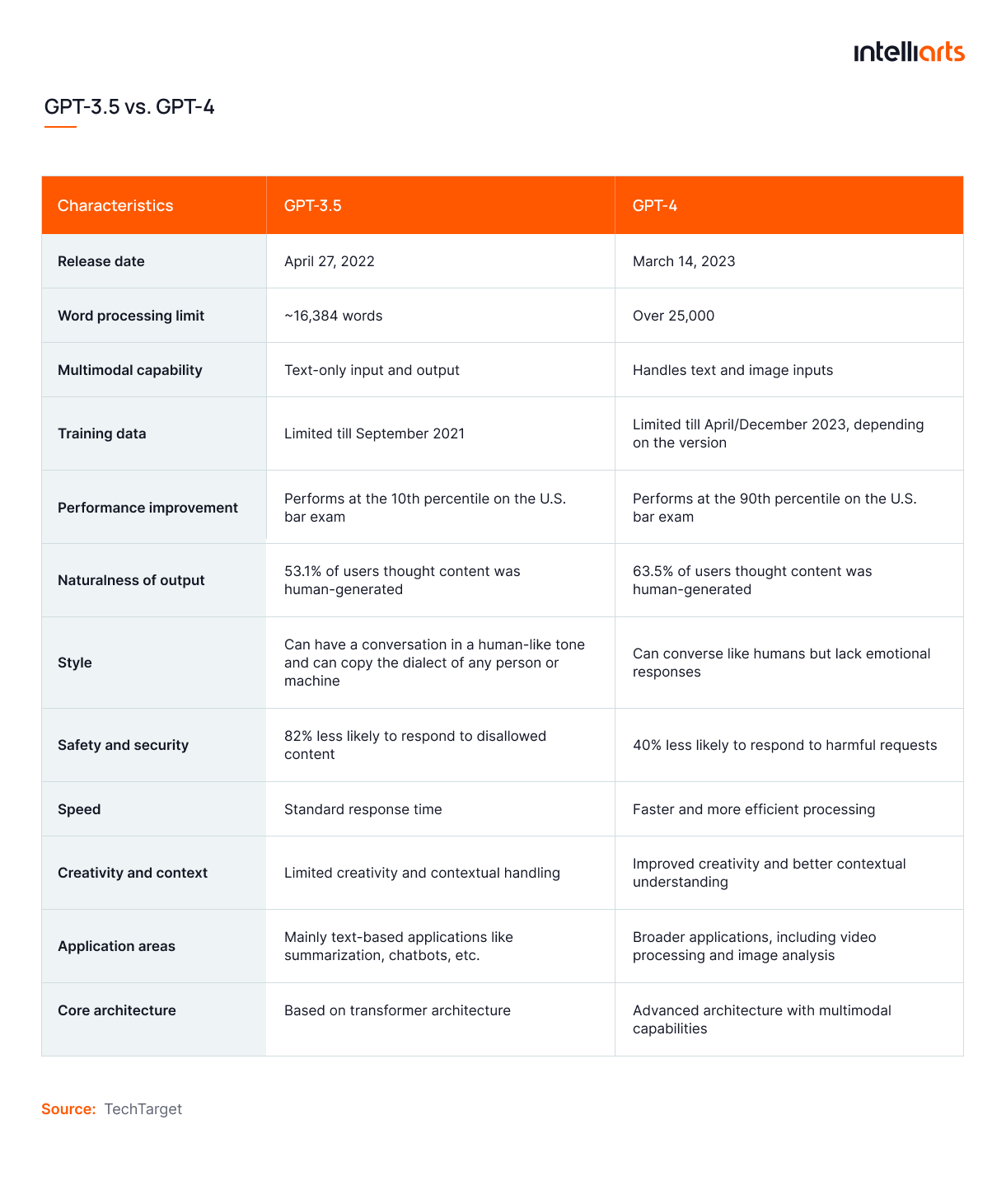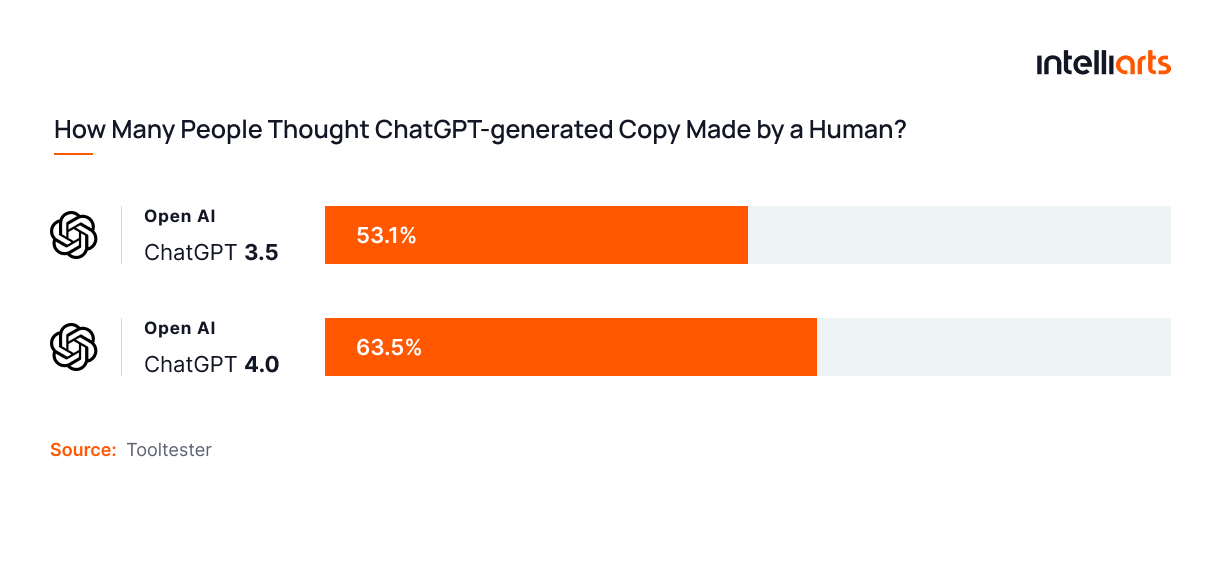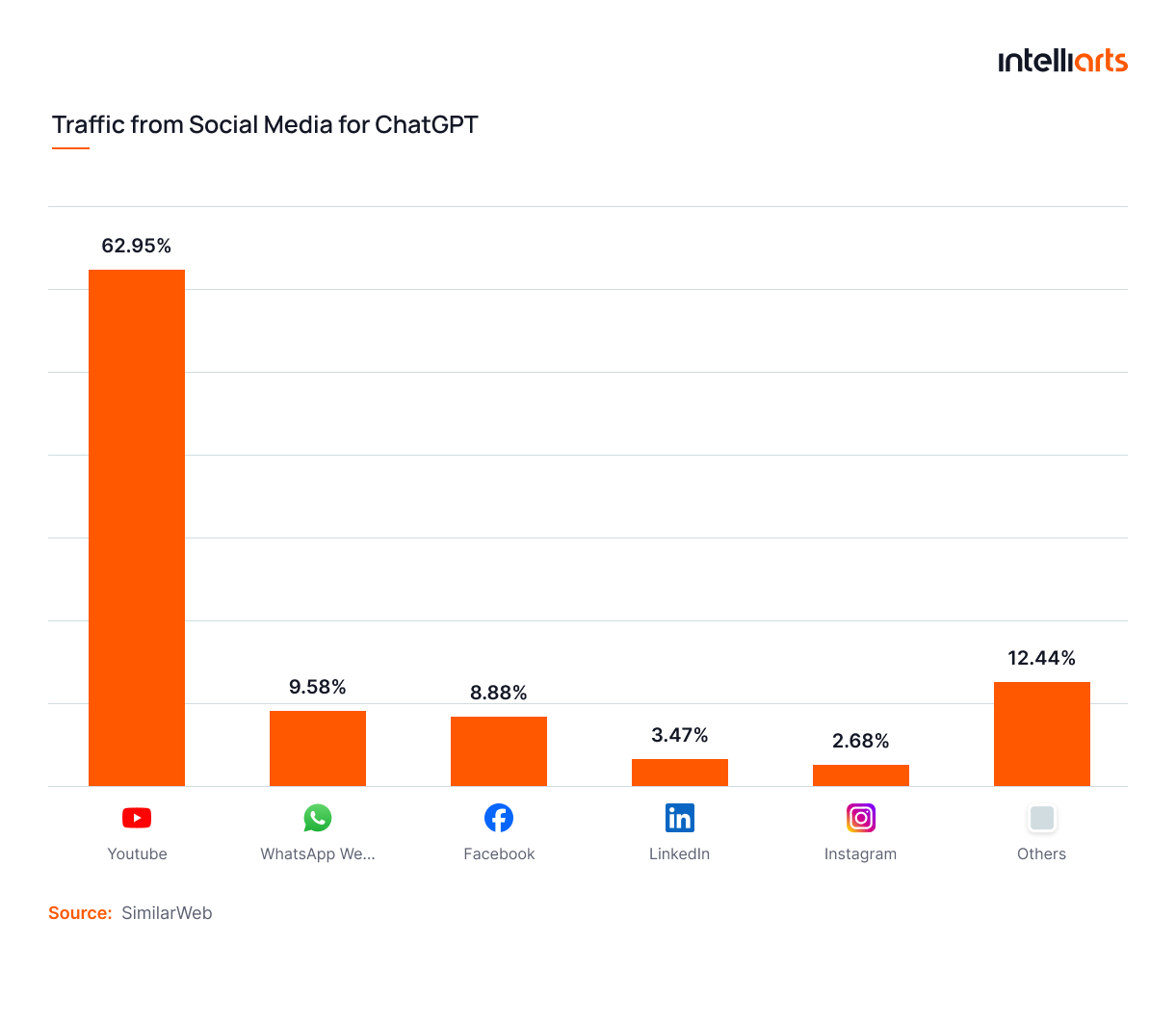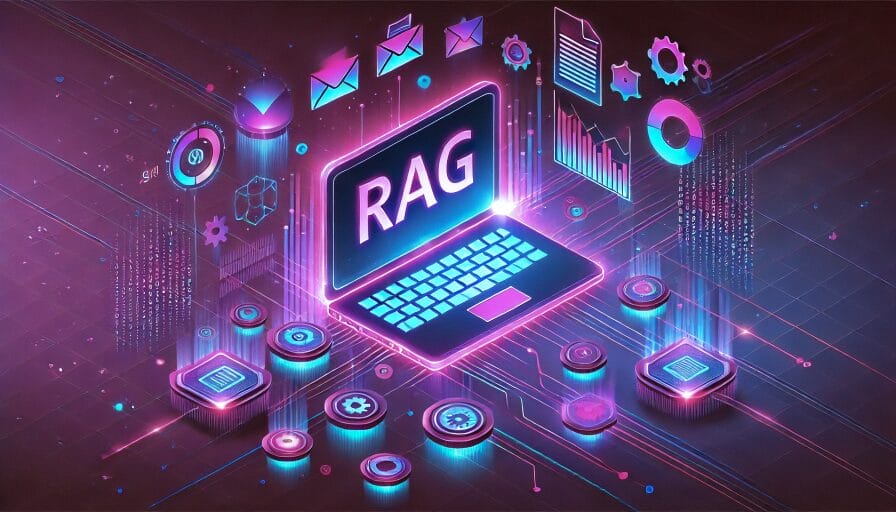Like it or not, ChatGPT statistics prove that top Large Language Models (LLMs) impact the way we work. ChatGPT brings lots of opportunities for growth and innovation, helping businesses with automation, decision-making, and productivity.
Intelliarts’ customers are reaping the benefits of ChatGPT too. In our experience, we’ve built different solutions on top of it to help with contract analysis, students’ work analysis, and more. We aim to deliver ML solutions that drive tangible results—like when our predictive modeling solution for real estate helped our partner reach the revenue of $5-7 million per quarter.
But who uses ChatGPT, and why?
Combining our practical experience and insights into industry trends, this article dives into the key statistics about ChatGPT for 2025 and its use cases that drive the impact of LLMs on the workplace.
ChatGPT statistics report highlights
To save you time, here’s the editor’s pick of the top 10 ChatGPT stats you need to know. These key figures shed light on the platform’s growth, usage, and impact as we head into 2025:
1. User base growth: ChatGPT’s user base has grown to over 250 million users weekly in 2024, as per OpenAI’s latest claims.
2. Adoption: An impressive 92% of Fortune 500 companies report leveraging OpenAI’s products, including renowned brands such as Coca-Cola, Shopify, Snapchat, PwC, Quizlet, Canva, and Zapier.
3. Training set insights: The exact size of the training set for GPT-4 has not been publicly disclosed yet. But it’s known that ChatGPT 3.5 was trained on a dataset of 570 GB, which included a vast collection of books, Wikipedia entries, web texts, articles, and other online sources. (BBC Science Focus).
4. Content generation power: The latest version, GPT-4, can generate up to 25000 words — 8 times more than GPT-3. It also understands around 25 languages.
5. Parameter expansion: The GPT-3 model is trained on 175 billion parameters, whereas the GPT-4 model is trained on over 1 trillion parameters.
6. Business impact: 97% of business owners believe that ChatGPT will positively impact their operations. Among the potential benefits, they mention generating responses for customers through chatbots (74%), summarizing content (53%), translation services (47%), email communication (46%), fixing coding errors (41%), and website content writing (30%).
7. Gen Z use: Gen Z is using ChatGPT more often as compared to other generations, with more than 60% of Gen Z using it on a regular basis. (Science Direct)
8. Sensitive data concern: 11% of the total data input into ChatGPT consists of sensitive information. What’s more, 4.7% of employees confess that they have entered sensitive data into the tool at least once since its launch.
9. Human vs. AI content: A recent survey proves that almost half of readers struggle to differentiate between content generated by ChatGPT and that written by humans.
10. Plugin ecosystem: By far, ChatGPT has over 920 different plugins, offering a whole range of functionalities from data extraction to code writing.
ChatGPT user growth statistics
As the popularity of the OpenAI model continues to rise, understanding ChatGPT usage statistics becomes crucial for assessing its impact and reach. Below we highlight the rapid growth of ChatGPT over these past years and analyze user engagement rates:
11. The number of ChatGPT users exceeded 1 million just five days after its launch, quickly becoming a compelling success story for the media. As compared, Instagram reached this milestone in 2.5 months, while Spotify took 5 months to achieve the same feat.
12. Today, the ChatGPT number of users has reached nearly 3.1 billion monthly, according to SimilarWeb. Most of the traffic comes from the USA, India, and Brazil.
13. A recent poll by YouGov reveals that nearly half of Americans have heard about ChatGPT. Out of these, approximately two-thirds of people with a postgraduate degree.
14. At the same time, 54% of US respondents have heard “nothing at all” about ChatGPT.
15. Businesses in 156 countries are leveraging OpenAI’s technology. (CTFI)
16. A large share of ChatGPT users access the tool via the web, with an average visit lasting around 6 minutes. (SimilarWeb)
17. Delving further into ChatGPT usage stats, direct traffic (73%) makes up the bulk of website visits. Meanwhile, 20% of users come from organic search. (SimilarWeb)
18. The ChatGPT mobile app has surpassed 110 million downloads on iOS and Android, generating nearly $30 million in revenue for OpenAI. (TechCrunch)
19. Adoption rates vary between 34% and 79% across different professions for both personal and professional use. (University of Chicago)
20. While ChatGPT experienced exponential growth from its launch to early 2023, it faced a noticeable decline in mid-2023. This could indicate the initial hype tapering off. At the same time, there was a renewed interest in September 2023, with traffic steadily increasing again through the end of the year. See how ChatGPT monthly visits progressed over time:
ChatGPT user stats
Now let’s dive into ChatGPT user statistics to gain insights into how this AI tool is embraced across various industries and demographics.
User demographics
21. ChatGPT is preferred by users across various age groups and genders. However, a significant share of ChatGPT visitors are male (55%), primarily between the ages of 18 and 34 (57%). (SimilarWeb)
22. 36% of Gen Z feel guilty about using ChatGPT to assist them at work, while one in three expresses concern about becoming too dependent on the tool. (Forbes)
23. A recent survey of 100,000 workers across 11 occupations showed that approximately half of the workforce has adopted ChatGPT, with younger, less experienced, high-performing, and predominantly male employees leading the curve.
24. The top interests of ChatGPT’s audience include news, software, online search, and games.
25. A survey of American professionals revealed that 32% are concerned about AI potentially eliminating certain jobs. Nearly half (48%) fear they may be left behind in their careers.
26. The 2024 study revealed that users trust ChatGPT less than Google Search and Wikipedia.
Adoption rates by industry
27. Marketing has the highest adoption rate, with 77% of professionals reporting ChatGPT use at work. This is followed by 71% of consulting professionals and 67% in advertising. (HR Dive)
28. The insurance sector has the lowest usage rate, with only a third (33%) of professionals indicating they’ve utilized ChatGPT. This is closely followed by 38% in the legal industry and 40% in healthcare. (HR Dive)
29. Only a year before, the survey by Statista showed technology (28%) and education (23%) as domineering sectors working with the OpenAI’s model. Healthcare (3%), government (2%), and media (2%) had the lowest adoption rates.
30. The study on brand affinity found that ChatGPT users also pay for GitHub (21%), Zapier (17%), Midjourney (16%), and Twilio (14%), among other digital services.
Common use cases
31. According to Statista, writing or debugging codes (66%) was the most common task performed with ChatGPT. Content creation (58%) and customer support (57%) followed closely, ranking second and third, as evident in the chart below.
32. 44% of business owners intend to use ChatGPT for content translation, while one in three plans to utilize it for content creation. (Forbes)
33. Over 3000 use cases for Gen AI, including ChatGPT, already exist. (PwC)
34. ChatGPT has applications in at least 30 different sectors, from customer service to healthcare to finances to marketing.
Want to discover more ChatGPT use cases? Look through the full infographics.
35. ChatGPT gives a significant boost to productivity, as per recent findings. Software engineers who use ChatGPT code 126% more projects per week. Customer support agents can manage 13.8% more inquiries per hour. And business professionals could write 59% more documents per hour.
36. 58% of entrepreneurs are convinced that the OpenAI model can create a more personalized experience for their customers.
37. Statistics indicate that customer support agents tend to be 14% more productive when using ChatGPT.
38. In a comparative study on bug-fixing capabilities, ChatGPT achieved a success rate of 77.5%, performing competitively with deep learning-based methods and showing better results than traditional techniques.
39. A third of travelers indicate that they are likely to use ChatGPT for planning their next trip.
40. A medical research study revealed that ChatGPT can generate medical notes 10 times faster than doctors, all while maintaining high-quality standards.
41. Another study on how students use ChatGPT as writing support showed that the vast majority of students (81%) used it for planning. 31% used the AI tool for reviewing and 16% for translating.
Market position and financial impact
42. 57% of entrepreneurs believe that ChatGPT will boost traffic to their websites, while 47% feel it will enhance their credibility.
43. With 3.1 billion monthly visits, ChatGPT ranks closely behind established giants like WhatsApp (3 billion) and Amazon (2.6 billion), suggesting its rapid growth as a significant player in the online landscape.
44. At the same time, it significantly lags behind platforms like Google (83.8 billion) and YouTube (31.4 billion), having substantial room for improvement and further expansion. Compare ChatGPT’s monthly visitors with other online platforms to get better insight into market position:
45. A study found that 70% of users rated their experience with ChatGPT as positive, identifying helpfulness as a key factor in their satisfaction.
46. 58% of CEOs expect ChatGPT to enhance the quality of their products and services.
47. A survey by Statista found that approximately 25% of companies saved between $50,000 and $70,000 by utilizing ChatGPT. 11% of businesses reported saving over $100,000 since introducing ChatGPT into their workflows.
48. The retention rate for ChatGPT users is reported at 85%, suggesting high satisfaction levels. (Earnest Analytics)
ChatGPT statistics by region
By examining ChatGPT user statistics by region, we get to know what markets are leading in the model adoption and how preferences vary around the world.
Global reach
49. The United States has the highest share of traffic (18%) directed towards ChatGPT. India (9%) and Brazil (6%) come next. (SimilarWeb)
50. As of now, ChatGPT is available in almost every country around the world, over 180 countries to be precise. (OpenAI)
51. A few countries still either banned or restricted ChatGPT, among which are China, North Korea, Iran, and Syria. Also, its availability in Russia is complicated by regulatory issues.
Usage in the United States
52. A recent report from the Pew Research Center analyzes ChatGPT usage by country and proves that 23% of US adults have used ChatGPT in contrast to 18% in the previous survey.
53. An Arizona state lawmaker utilized ChatGPT to draft part of the law on deepfakes. (Guardian)
54. The count of daily ChatGPT users in the United States has increased, with 27% of adults using it as part of their routine. (Pew Research Center)
55. The research shows that ChatGPT promotes American culture and values. The scientists evaluated ChatGPT by asking 24 questions in multiple languages, including English, German, Spanish, Chinese, and Japanese, across six cultural dimensions. The findings revealed that American participants’ responses were closely aligned with ChatGPT’s answers, unlike those from other cultural backgrounds.
56. Approximately 20% of U.S. teenagers familiar with ChatGPT have used it for schoolwork. (Pew Research Center)
Usage in Asia
57. ChatGPT is gaining popularity rapidly in Asia, especially in India, Indonesia, Japan, and South Korea. India ranks as the second-largest user base globally, following the United States. Most Indian users fall within the age group of 18 to 34, similar to global trends, indicating a strong interest among younger audiences in AI tools. (SimilarWeb)
58. The survey indicates that users in India and the Philippines primarily leverage ChatGPT for research assistance or as a virtual personal assistant, highlighting its growing role as a productivity aid across the region.
Transform your ideas into reality with a reputable AI development company. Let Intelliarts help you develop cutting-edge custom ChatGPT solutions that align with your business objectives.
ChatGPT revenue statistics
With increasing demand reflected in ChatGPT statistics, the model has demonstrated significant revenue potential. Explore the money income of ChatGPT and OpenAI in more detail:
59. In 2024, OpenAI has already generated $3.7 billion in revenue, and it’s projected to bring in $11.6 billion in sales in 2025. (CNBC)
60. The company predicts its revenue to reach $100 billion by 2029, comparable to the current annual sales figures of major companies like Nestlé and Target. (NYTimes)
61. OpenAI is among the most expensive AI startups today, with its worth reaching $157 billion, based on recent numbers reported by industry analysts. (Fortune)
62. API usage fees are becoming a key revenue driver, with many companies integrating GPT-4 into their own services. In 2024, this monetization strategy helped OpenAI strengthen its financial position.
63. Microsoft is OpenAI’s main investor. Having a 46% share in the company, Microsoft invested $10 billion in OpenAI. Among other renowned investors, are Matthew Brown Companies, Sequoia Capital, Tiger Global Management, Bedrock Capital, Khosla Ventures, and others.
64. In the latest funding round, OpenAI raised $6.6 billion, with giants like Nvidia and SoftBank playing crucial roles in the investment. This has generated significant buzz in investment circles, highlighting growing confidence in OpenAI’s potential.
65. According to preliminary estimates, OpenAI spends approximately $700,000 each day to maintain and operate ChatGPT. This mainly includes expenses for infrastructure, technology, and development to support the platform’s growth and user demand.
66. By the end of 2024 alone, OpenAI expects to pay around $5 billion for business operations, including service maintenance costs, employee salaries, and office expenses. (NYTimes)
67. ChatGPT’s electricity consumption in a single month is comparable to the energy usage of nearly 175,000 individuals in a mid-sized city. (Science Direct)
68. The net revenue of the ChatGPT mobile app surged by 22% on the day GPT-4o was launched, with this growth continuing in the next months. (TechCrunch)
69. ChatGPT Enterprise has become the most popular revenue stream for OpenAI, serving 260 B2B companies, including industry giants like PwC, Canva, and Zapier.
GPT-4 statistics
With improved accuracy, enhanced contextual understanding, and a wider range of applications, the release of GPT-4 marked a significant advancement in AI capabilities. Let’s see the key features and differences of GPT-4 compared to earlier versions, as well as its impact on user experience.
70. Launched on March 14, 2023, GPT-4 brings a host of new features, including the ability to chat, hear, and speak. This version enhances user experience through video processing, faster response times, and multimodal capabilities, allowing for a more interactive and versatile engagement.
71. GPT-4 can handle up to 25,000 words of text input, while the free version, accessed via OpenAI’s API, is limited to processing 16,384 words. Let’s look at other characteristics of the two versions:
72. GPT-4 is often described as OpenAI’s largest language model, with a rumored size of 1 trillion parameters. However, recent estimates place the actual number closer to 220 billion, indicating potential overestimations regarding the model’s true scale. (Semafor)
73. GPT-4 outperformed GPT-3 and other earlier models across various categories, including mathematics, technology, writing, science, recommendations, business, coding, and learning. (OpenAI)
74. In terms of performance, GPT-3.5 passed the US bar exam for lawyers, outperforming only 10% of human test-takers, while GPT-4 achieved remarkable success, surpassing 90%. (Stanford Law School)
75. The latest version of ChatGPT also achieved an accuracy rate of 86.7% in medical QA tasks, showcasing its potential for handling complex healthcare-related inquiries.
76. Responses generated by GPT-4 were preferred over those from GPT-3.5 for 70.2% of prompts. (OpenAI)
77. A study on divergent thinking and creativity found that GPT-4 produced responses that were more original and complex compared to those from human participants. Only 9.4% of human answers were more creative than those of ChatGPT.
78. When using GPT-3.5, 53.1% of people perceived the model’s content as human-written. With GPT-4.0, this increased to 63.5%, indicating that more users believed the content was created or edited by a human writer. (Tooltester)
79. With GPT-4, users can design tailored chatbots, known as GPTs, for various tasks such as marathon training, creative writing, and trip planning. Since its launch, users have created over 3 million GPTs. (OpenAI)
80. The recent study revealed that the performance of both GPT-3.5 and GPT-4 tends to decline over time, which raises questions about the long-term reliability and consistency of these models.
81. In another study, researchers investigated the capability of ChatGPT to detect AI-generated text and found that the model can identify AI-generated text in less than 50%. At the same time, it performed accurately in distinguishing human-written text.
82. With GPT-4, teams are 12% more productive and perform tasks 25% faster, as per the research findings.
Discover key differences between GPT, LLaMA, and PaLM to learn how these technologies can impact your business and unlock new opportunities.
Future predictions: Where is ChatGPT headed?
As we look ahead, the future of ChatGPT appears promising, backed by a wealth of data from ChatGPT statistics 2024.
ChatGPT will evolve in two key directions: improving computational efficiency to reduce costs, enable fine-tuning, and support business-specific models, and advancing context handling to generate more relevant answers through complex contextual understanding. These advancements will make it more adaptable, efficient, and impactful across industries. – Volodymyr Mudryi, Data Scientist at Intelliarts
Now it’s time to check emerging trends and expected developments for ChatGPT to see how it will continue to evolve and impact industries.
Upcoming releases
83. In January 2024, the CEO of OpenAI confirmed that work on GPT-5 is underway, although a specific release date has yet to be announced. Projections suggest it may be late 2024 or early 2025, following a timeline similar to previous models, where the training and safety testing phases typically take over two years.
84. Before ChatGPT-5, there might be an intermediate release of GPT-4.5, similar to the transition from GPT-3 to GPT-3.5, to further refine capabilities.
85. One of the major enhancements in ChatGPT-5 is expected to be improved reasoning. OpenAI aims to make significant advancements in how the model understands and processes complex information.
86. Multimodality emerged as a key innovation in GPT-4, allowing the model to process and generate responses based on both text and images. OpenAI is keen on further enhancing these multimodal capabilities, recognizing their potential to revolutionize how users interact with AI.
87. OpenAI is also placing a strong emphasis on personalization as it evolves ChatGPT. The model is expected to provide a more tailored user experience by better understanding individual preferences and needs.
88. The company is likely to prioritize data privacy and misuse. Researchers are suggesting the implementation of stricter guidelines and best practices to ensure responsible AI usage, as well as enhanced transparency and accountability mechanisms.
Market trends
89. Generative AI is projected to reach a market value of $1.3 trillion by 2032, highlighting the growing significance and opportunities in this sector. (Bloomberg)
90. Future ChatGPT statistics indicate that 63% of its social media traffic is expected to originate from YouTube, highlighting a strong preference for video-based content among users. In comparison, WhatsApp contributes 10%, Facebook accounts for 9%, and LinkedIn provides 3%, as evident in the graph below. (SimilarWeb)
91. In the next few years, OpenAI should expect more fierce competition in the AI sector. The SemiAnalysis report says that Google and Meta are projected to invest over $100 billion in training advanced models.
92. The research identifies six key areas where ChatGPT will prevail: human resources, programming, social media, office automation, search engines, and education.
93. OpenAI is also expected to deepen its collaborations and partnerships with major tech companies to incorporate ChatGPT into their platforms, enhancing its reach and functionality.
94. As an example of this trend, Microsoft has already announced plans to incorporate ChatGPT into Office 365, enhancing the suite’s capabilities with advanced AI features. (CNN)
95. Recently, OpenAI has introduced ChatGPT Edu, a tailored offering aimed at educational institutions. This initiative could potentially create a new revenue stream projected to be worth $500 million annually.
96. OpenAI’s healthcare applications are anticipated to generate approximately $1 billion in revenue as hospitals and clinics increasingly adopt AI technologies for various functions, including patient care and administrative tasks. (Technopedia)
Strategic investments
97. With the new funding raised, OpenAI is going to reinforce its leadership in advanced AI research, invest money into compute capacity, and new tools to help tackle complex challenges.
98. The company also plans to raise prices: from $20 to $22 per month by the end of the year and up to $44 over the next 5 years. (NYTimes)
99. The largest expense for OpenAI is the computing power it acquires through its partnership with Microsoft. To reduce these costs in the coming years, the company aims to leverage more advanced chips and optimize its data centers, among other strategies. (NYTimes)
100. OpenAI also plans to cut training costs by optimizing hardware and exploring more efficient algorithms.
Wrap up
The remarkable rise of Gen AI and ChatGPT, in particular, is not just a passing trend; it signifies a fundamental shift in how we engage with technology. The ChatGPT statistics presented in this article highlight its rapid adoption and widespread integration across various sectors, positioning it as a transformative tool for businesses.
With AWS-certified specialists on board, Intelliarts as an AI and ML development company can help develop custom ChatGPT solutions that empower your workforce and boost ROI. We have extensive experience with AI chatbots, including ChatGPT-driven solutions, and are ready to bring your innovative ideas to life. Contact us today to explore how we can help you harness the power of ChatGPT.
FAQ
1. How many users does ChatGPT have?
As of 2024, ChatGPT has over 100 million active users, according to recent ChatGPT usage stats. This exponential growth highlights how many people use ChatGPT for a wide range of applications, from content creation to customer support.
2. How does Intelliarts ensure seamless integration of ChatGPT solutions into existing business infrastructure?
Intelliarts employs the CRISP-DM methodology and industry best practices to align ChatGPT solutions with our partners’ systems effectively. This structured approach, combined with rigorous testing, helps us minimize disruptions and achieve smooth, optimized deployment.
3. What unique value does Intelliarts bring to custom ChatGPT development compared to other AI solution providers?
Intelliarts leverages over 25 years of experience in software engineering, AWS-certified specialists, and deep AI/ML expertise to deliver custom ChatGPT solutions tailored to each customer’s goals. With 80+ large-scale projects completed, we combine technical depth with proven industry experience to create impactful, scalable implementations.

